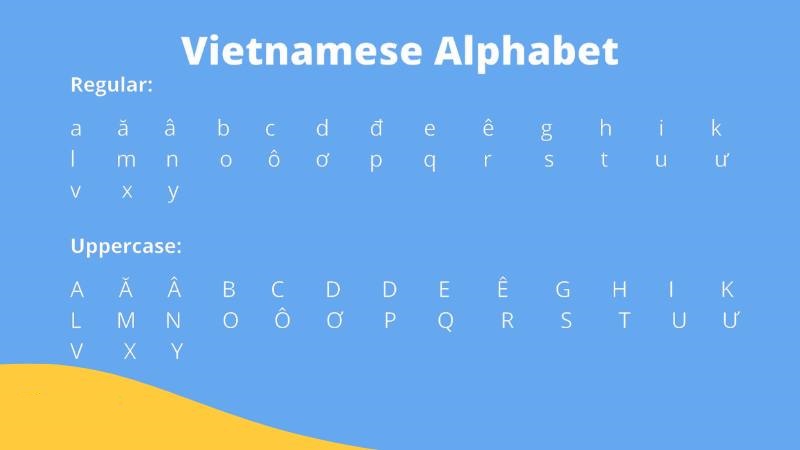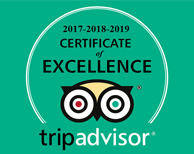Vietnam Language: History, Origin of Vietnamese Alphabet
Vietnam Language: Vietnamese (Tiếng Việt) is the official and national language of Vietnam and is spoken by a large majority of the Vietnamese People. It is also one of the few languages in Asia that uses the Latin alphabet instead of symbols. This makes it a lot easier to interpret street signs and even learn to speak in Vietnamese.
History and Origin of Vietnamese Language
Vietnamese belongs to the Northern (Viet–Muong) clusters of the Vietic branch, spoken by the Vietic peoples, originating from Northern Vietnam. The language Inscription was carved on stone steles at Temple of Literature, in combined Chữ Hán (Chinese characters used in the Vietnamese traditional writing system) and an archaic form of the Chữ Nôm (writing system for vernacular Vietnamese language using Chinese characters).

Vietnamese Alphabet Founded from 1651
Vietnamese had shared more characteristics common to other languages in South East Asia and with the Austroasiatic family, such as an inflectional morphology and a richer set of consonant clusters, which have subsequently disappeared from the language under Chinese influence. Vietnamese is heavily influenced by its location in the Mainland Southeast Asia linguistic area, with the result that it has acquired or converged toward characteristics such as isolating morphology and phonemically distinctive tones, through processes of tonogenesis. These characteristics have become part of many of the genetically unrelated languages of Southeast Asia; for example, Tsat (a member of the Malayo-Polynesian group within Austronesian), and Vietnamese each developed tones as a phonemic feature. The ancestor of the Vietnamese language is usually believed to have been originally based in the area of the Red River Delta in what is now northern Vietnam.
Distinctive tonal variations emerged during the subsequent expansion of the Vietnamese language and people from the Red River Plain into what is now central and southern Vietnam through conquest of the Ancient Nation of Champa and the Khmer people of the Mekong Delta in the vicinity of present-day Ho Chi Minh City, also known as Saigon.

Vietnamese Alphabet and Tone in Writing System
Northern Vietnam was primarily influenced by Chinese, which came to predominate politically in the 2nd century BC whilst central and southern lands were occupied by Chamic and Khmer empires. After the emergence of the Ngô dynasty at the beginning of the 10th century, the ruling class adopted Classical Chinese as the formal medium of government, scholarship and literature. With the dominance of Chinese came radical importation of Chinese vocabulary and grammatical influence. The resulting Sino-Vietnamese vocabulary makes up about a third of the Vietnamese lexicon in all realms, and may account for as much as 60% of the vocabulary used in formal texts.
After France invaded Vietnam in the late 19th century, French gradually replaced Chinese as the official language in education and government. Vietnamese adopted many French terms, such as đầm (‘dame’, from madame), ga (‘train station’, from gare), sơ mi (‘shirt’, from chemise), and búp bê (‘doll’, from poupée) as well as the Latin alphabet, resulting in a language that was Austroasiatic but with major Sino-influences and some minor French influences from the French colonial era. The French sinologist, Henri Maspero, described six periods of the Vietnamese language:
- Proto-Viet–Muong, also known as Pre-Vietnamese, the ancestor of Vietnamese and the related Mường language (before 7th century AD).
- Proto-Vietnamese, the oldest reconstructable version of Vietnamese, dated to just before the entry of massive amounts of Sino-Vietnamese vocabulary into the language, c. 7th to 9th century AD. At this state, the language had three tones.
- Archaic Vietnamese, the state of the language upon adoption of the Sino-Vietnamese vocabulary and the beginning of creation of the Vietnamese characters (chữ Nôm) during the Ngô Dynasty, c. 10th century AD.
- Ancient Vietnamese, the language represented by Chữ Nôm (c. 15th century), widely used during the Lê dynasty. The Ming glossary “Annanguo Yiyu” (c. 15th century) by the Bureau of Interpreters recorded the language at this point of history. By this point, a tone split had happened in the language, leading to six tones but a loss of contrastive voicing among consonants.
- Middle Vietnamese, the language found in Dictionarium Annamiticum Lusitanum et Latinum of the Jesuit missionary Alexandre de Rhodes (c. 17th century); the dictionary was published in Rome in 1651. Another famous dictionary of this period was written by P. J. Pigneau de Behaine in 1773 and published by Jean-Louis Taberd in 1838.
- Modern Vietnamese, from the 19th century, the modern Vietnamese language still uses chữ Quốc ngữ which includes 29 main characters and five-tone marks. There are also many letter combinations, diphthongs, and triphthongs. Chữ Quốc ngữ is spoken by about 90% of the Vietnamese population, together with other minority languages such as Ê Đê, Hmong.
|
Useful Sentences for General Talk in Vietnamese Language: |
||
|
English |
Vietnamees |
Pronunciation |
|
Hello |
Xin chào |
Xin-chao |
|
Bye |
Tạm biệt |
Tam-biet |
|
How are you? |
Bạn khỏe không |
Ban-ko-khe-khong |
|
Nice to meet you |
Rất vui được gặp bạn |
Rat-vui-duoc-gab-ban |
|
Doing well, thanks |
Cảm ơn, tôi khỏe |
Kam-own, toi-khe |
|
Do you speak English? |
Bạn có thể nói tiếng Anh không? |
Ban-ko-noi-duok-tien-eng-kong |
|
What’s your name? |
Tên bạn bạn là gì |
Ten-ban-la-zee |
|
I’m from … |
Tôi đến từ… |
Toi-den-tu… |
|
My name is… |
Tên tôi là… |
Ten-toi-la… |
|
Do you understand? |
Bạn có hiểu không? |
Ban-ko-hiew-kong |
|
I do not understand |
Tôi không hiểu |
Toi-kong-hiew |
|
Yes |
Vâng |
Vang |
|
No |
Không |
Kong |
|
Help! |
Cứu! |
Kiu |
|
Thank you |
Cảm ơn |
Kam-own |
|
What? |
Cái gì? |
Kai-ge |
|
How much? |
Bao nhiêu? |
Baow-nhiu |
|
Which? |
Cái nào? |
Cai-now |
|
Where? |
Ở đâu? |
Ow-dau |
|
When? |
Khi nào? |
Khi-now |
|
I do not like it |
Tôi không thích nó |
Toi-kong-thik-no |
|
I like it |
Tôi thích nó |
Toi-thik-no |
|
Useful Vietnamese Words for Food and Drink |
||
|
English |
Vietnamese |
Pronunciation |
|
Fish |
Cá |
Ka |
|
Shrimps |
Tôm |
Tom |
|
Shellfish |
Sò |
So |
|
Rice |
Cơm |
Kom |
|
Meat |
Thịt |
Theed |
|
Beef |
Thịt bò |
Theed-bo |
|
Chicken |
Thịt gà |
Theed-ga |
|
Egg |
Trứng |
Trung |
|
Duck |
Thịt vịt |
Theed-vid |
|
Pork |
Thịt lợn |
Theed-lon |
|
Lamb |
Thịt cừu |
Theed-kiu |
|
Seafood |
Hải sản |
Hai-san |
|
Coffee |
Cà phê |
Café |
|
Tea |
Trà |
Traj |
|
Water |
Nước |
Nuok |
|
Breakfast |
Ăn sáng |
An-sang |
|
Lunch |
Ăn trưa |
An-trua |
|
Diner |
Ăn tối |
An-toi |
|
Chopsticks |
Đũa |
Dua |
|
Fork |
Nĩa |
Nia |
|
Knife |
Dao |
Daow |
|
Spoon |
Thìa |
Thia |
|
Glas |
Cốc |
Coke |
|
I’m full |
Tôi no rồi |
Toi-no-roi |
|
Very tasty! |
Rất ngon! |
Rat-ngon |
|
Can I have the menu? |
Làm ơn cho tôi thực đơn? |
Lam-own-cho-toi-thuk-dern |
|
Can I have the menu in English? |
Bạn có thực đơn bằng tiếng Anh không? |
Ban-ko-thuk-dern-bang-tieng-Anh-kong |
|
May I have the bill? |
Làm ơn cho tôi hoá đơn? |
Lam-own-cho-toi-hoa-dern |
|
Restaurant |
Nhà hàng |
Nha-hang |
|
Useful Sentences to Ask for Directions |
||
|
English |
Vietnamese |
Pronunciation |
|
I no longer have gas |
Tôi bị hết xăng |
Toi-bi-het-xang |
|
I am lost, please help me |
Tôi bị lac, làm ơn giúp |
Toi-bi-lak, lam-own-giup |
|
Waar is ….? |
Ở đâu là…? |
Ow-dau-la |
|
How far is it? |
Nó xa bao nhiêu? |
No-xa-baow-nhiew |
|
Go straight ahead |
Đi thẳng |
Di-thang |
|
Left |
Trái |
Trai |
|
Right |
Phải |
Phai |
|
It is an emergency |
Đây là một trường hợp khẩn cấp |
day-la-mod-truong-hop-khan-cap |
|
Where is the nearest police station? |
Đồn cảnh sát gần nhất ở đâu? |
Don-canh-sat-gan-nhat-ow-dau |
|
Please help me |
Làm ơn giúp tôi |
Lam-on-giup-toi |
|
Where is the hospital? |
Bệnh viện ở đâu? |
Benh-vien-ow-dau |
|
I need a doctor? |
Tôi cần một bác sĩ |
Toi-kan-mod-bac-si |
|
Police station |
Đồn cảnh sát |
Don-canh-sat |
|
Market |
Chợ |
Cho |
|
Hotel |
Khách sạn |
Khach-san |
|
ATM |
Máy rút tiền |
May-rud-tien |
See Related Articles:
- English to Vietnamese: The Best Software and Translation App
- Customs Information - Viet Nam Entrance and Exit Procedures
- Travel to Vietnam: Visa on Arrival, Online-Extension and E-visa
- Travel Safety in Vietnam: All You Need to Know Before You Go
- Vietnam Facts & Figures - All You Need to Know Before You Go
- Frequently Questions of Foreign Tourists Traveling in Vietnam

Best of Vietnam

Best Vietnamese Food You Have to Try in Vietnam
Best Food in Vietnam: Vietnamese Traditional Food is top World well known to be both healthy and...

10 Best National Parks in Vietnam
Vietnam Travel Guide: If you look for the Best Wildlife Discovery Experience in Vietnam, here are...
Read More
Best Souvenir to Buy in Vietnam
If you look for Best Things to Buy when traveling to Vietnam to bring home for your family & friends...
Read More
The 10 Best Places to Visit in Vietnam
Vietnam Travel Guide: Home to an extensive collection of historical and cultural attractions,...
Read More
Top 10 Museums You Should Not Miss in Vietnam
Vietnam, 4.000 years old country has a unique and lengthy history, culture with 54 ethnic groups. It...
Read MoreFind your trip
Vietnam Best Tours
Vietnam Car Rental
Vietnam Travel Blog
- Vietnamese People: Origin, History, Culture and Traditions
- Vietnam Currency: Best ATM and Places to Exchange Money
- Vietnam Map: Regions, Cities & Provinces Map of Vietnam
- What is illegal Things in Vietnam: Rules & Laws for Tourists
- Best Time to Travel to Vietnam to Avoid the Bad Weather
- Vietnam News: Population & Religions of 54 Ethnic Groups









